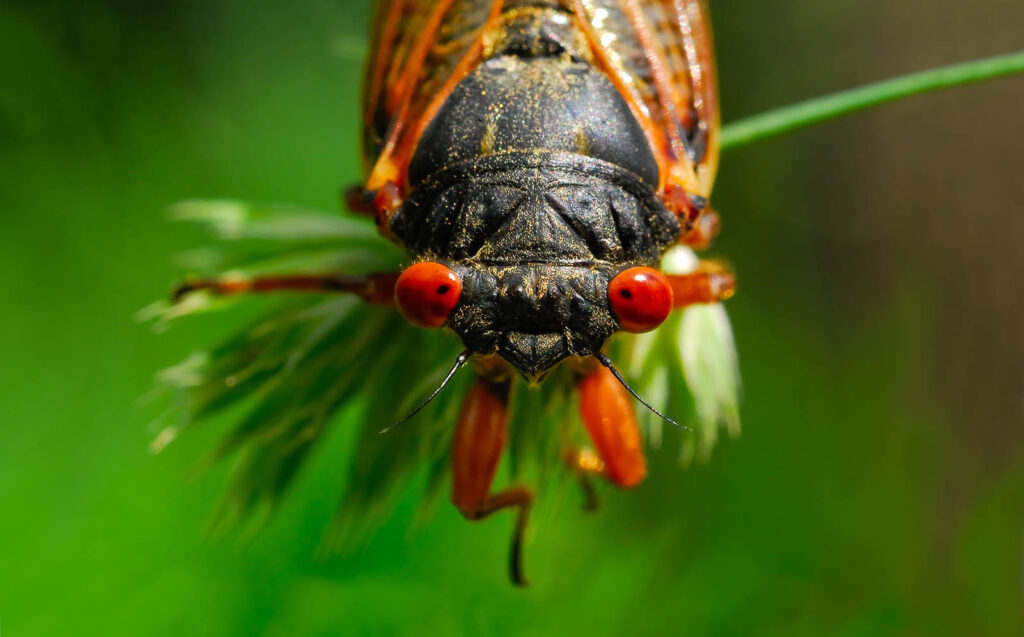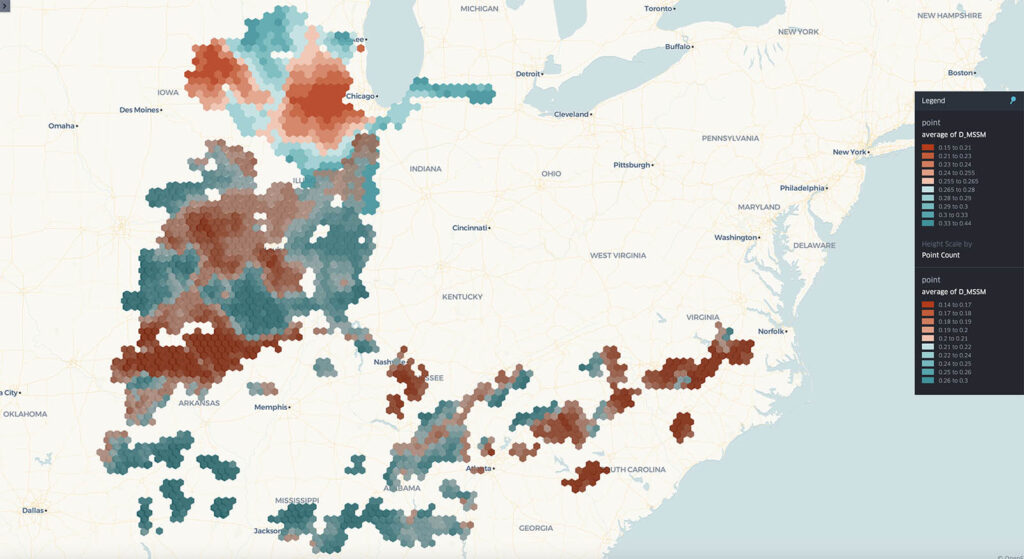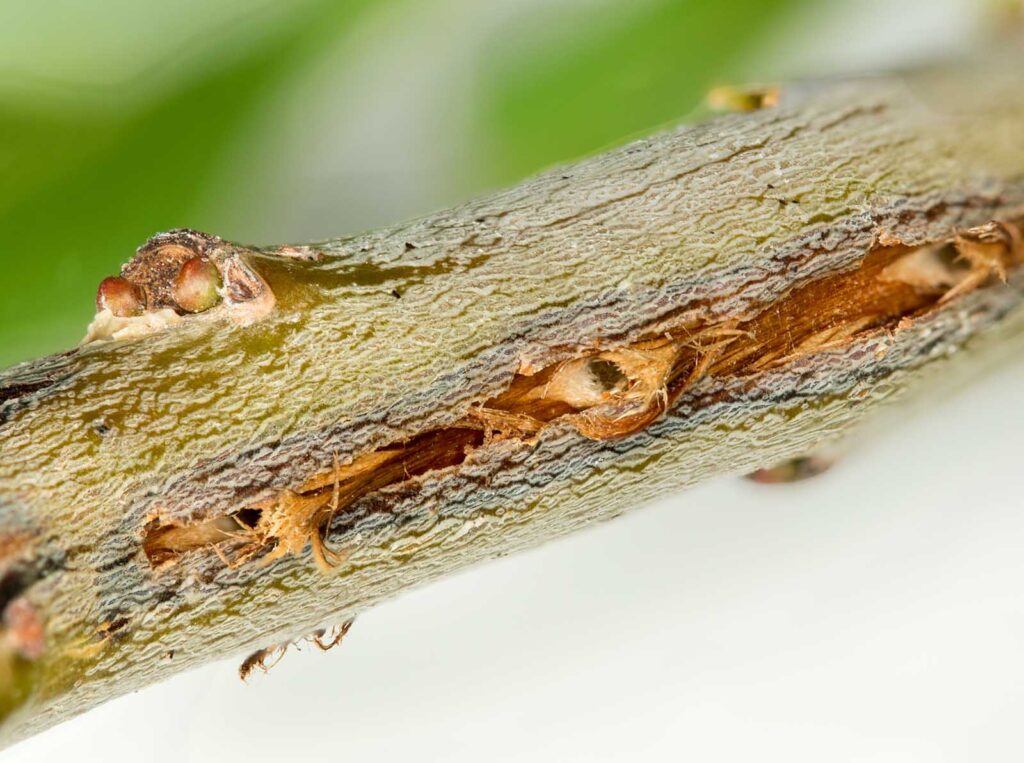Cicada invasion: US farmers prepare as rare double brood emerges
Everything agricultural interests need to know about the outbreak of cicadas; from when they will emerge, to management, and Spire innovations that can help the industry stay ahead.
In a rare spectacle, trillions of cicadas will swarm the United States in early May. Two broods will emerge in parts of the Midwest and Southeast, creating a buzz, quite literally since the males’ mating song is thunderous.
Not only can cicadas disrupt tourism and events due to the loud mating tunes, but they can also pose problems to other business sectors, including travel and logistics due to the accumulation of carcasses on roadways and airport runways.
Perhaps the most notable impacts will be to the agriculture industry, but there are both positive and negative effects. Wildlife such as birds feast on cicadas, which, in turn, benefits populations and agriculture through natural pest control. Additionally, cicadas emerge from tunnels in the ground, where they have remained buried for 13 or 17 years, depending on the brood. In doing so, they act to naturally aerate the soil and improve water filtration, according to the Environmental Protection Agency (EPA). Once cicadas die, nitrogen and other nutrients are added to the soil.
On the other hand, the females slit the bark of shrubs and trees to lay their eggs, sometimes resulting in damage, mainly to young trees. Leaves can turn brown at the tips of affected tree branches, and the dieback is referred to as “flagging,” although the EPA notes that cicadas are not generally considered destructive pests. However, locally the damage can decrease yields and increase maintenance costs for orchards and farms.
Agricultural interests can be prepared for the cicada invasion by tracking weather factors such as soil temperature and soil moisture, and by utilizing proper management techniques. Spire Weather & Climate has in-depth data on soil temperature and Soil Moisture Insights along with accurate, space-backed forecasts for many agricultural applications.

What to know about the US cicada invasion
A dual emergence of these broods is rare, happening every 221 years, according to cicadasafari.org. This double brood of periodical cicadas will coincide in the United States for the first time since 1803, when Thomas Jefferson was the US President. Brood XIII is a 17-year cicada that will surface in northern Illinois, and Brood XIX is a 13-year cicada that will emerge in parts of the Midwestern and Southeastern US.
The biggest overlap of the two broods will occur toward central Illinois, well to the south of Chicago. While Brood XIII we be fairly confined to eastern Iowa, northern Illinois, and southern Wisconsin, the Brood XIX outburst will be more widespread, spanning from Missouri and Louisiana to Maryland and Georgia.
Learning when the cicadas will arrive in different areas is the first step to managing them in agricultural settings, and understanding their lifecycle is another vital aspect of taking precautions.
After cicada nymphs — or immature cicadas — dig tunnels and surface, they molt, leaving exoskeletons behind, often attached to trees, and mature into adults. These adults then court and mate in trees and shrubs. Subsequently, female cicadas lay their eggs on tree branches. Roughly six weeks later, nymphs hatch from the eggs and descend to the ground where they burrow into the soil, feed on the roots of trees and shrubs, and initiate the cicada lifecycle anew.

Spire’s Soil Moisture Insights: A map of the US showing surface soil moisture data as of April 25, 2024, in locations with emerging cicada broods.
Weather factors behind cicada emergence
Periodical cicadas emerge during odd years as an adaptation to satiate predators while still allowing the survival of many adult cicadas. The timing of their surfacing is tied to weather factors as conditions warm up in late spring and early summer.
Cicada surfacing is most closely linked to the temperature of the soil at a depth of about 20 cm (8 inches). Nymphs emerge when soil temperatures reach 18ºC (64ºF).
Studies have also shown that an increase in soil moisture can also be an indicator that cicadas will soon appear.
Cicada damage
Some trees are more susceptible to damage caused by female cicadas laying eggs. Oaks, Maples, Hawthorn, Redbud, Cherry, and other fruit trees are among the most vulnerable, according to the University of Maryland.
Cicada management
Managing cicadas effectively during their short above-ground period involves understanding their behavior and taking appropriate precautions. Experts do not recommend spraying pesticides as it is generally ineffective and unnecessary, the EPA states. Cicadas are harmless insects that do not bite, sting, or pose any significant threat to humans, pets, or plants. Moreover, pesticides can harm beneficial insects, pets, and other organisms, making them an impractical solution for cicada control.
For young trees susceptible to cicada damage, simple protective measures can be utilized. Covering them with mesh or netting with small openings (¼-inch or smaller) can prevent cicadas from depositing their eggs in the branches, thus avoiding potential damage. However, established mature trees typically do not require control measures, as cicadas do not pose a significant threat to their health.

It’s also essential to understand that cicadas will naturally go away after their above-ground period, typically lasting for 6-8 weeks. During this time, adult cicadas primarily feed on small amounts of sap from trees and shrubs and do not consume leaves, flowers, fruits, or garden produce, according to the EPA. Therefore, there’s usually no need for special precautions or additional insecticides in gardens or agricultural settings.
For those planning to plant trees or shrubs during a cicada emergence year, delaying planting until the fall when cicadas are gone may be advisable. However, if planting during the emergence period is necessary, covering small ornamental trees, shrubs, or fruit trees with insect netting can provide protection from cicada damage, according to the University of Maryland. It’s crucial to use netting with appropriate openings to prevent trapping of wildlife, and to remove the barriers once the cicadas are gone to avoid hindering plant growth or other potential issues.
Discover Spire’s agriculture insights and innovation
With Spire, stepping into the future of agricultural and environmental management means embracing innovation that empowers your decisions and enhances the resilience of our global ecosystem. Our mission is to elevate your operations with unparalleled insights into the Earth’s most fundamental resource: its soil.
 Written by
Written by


